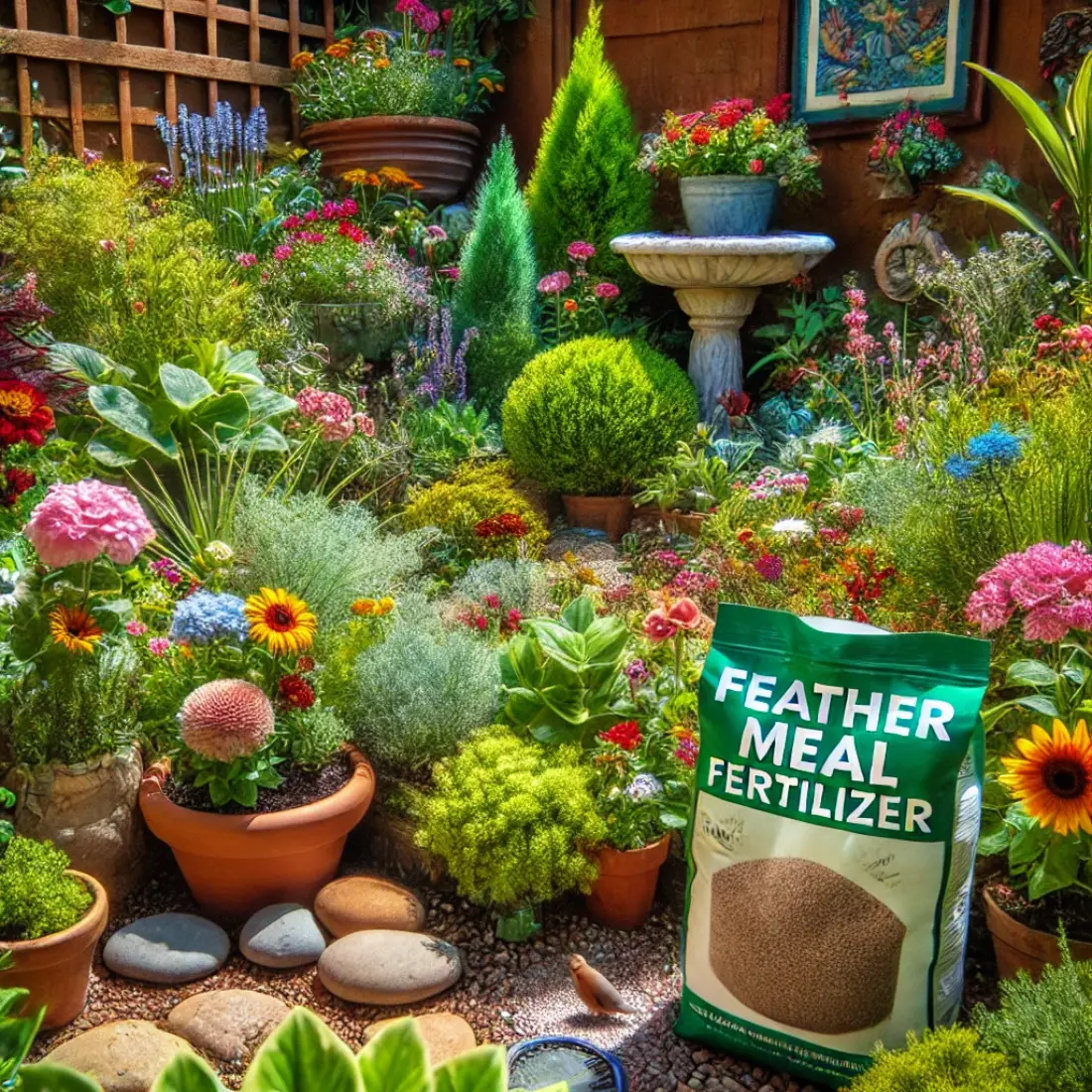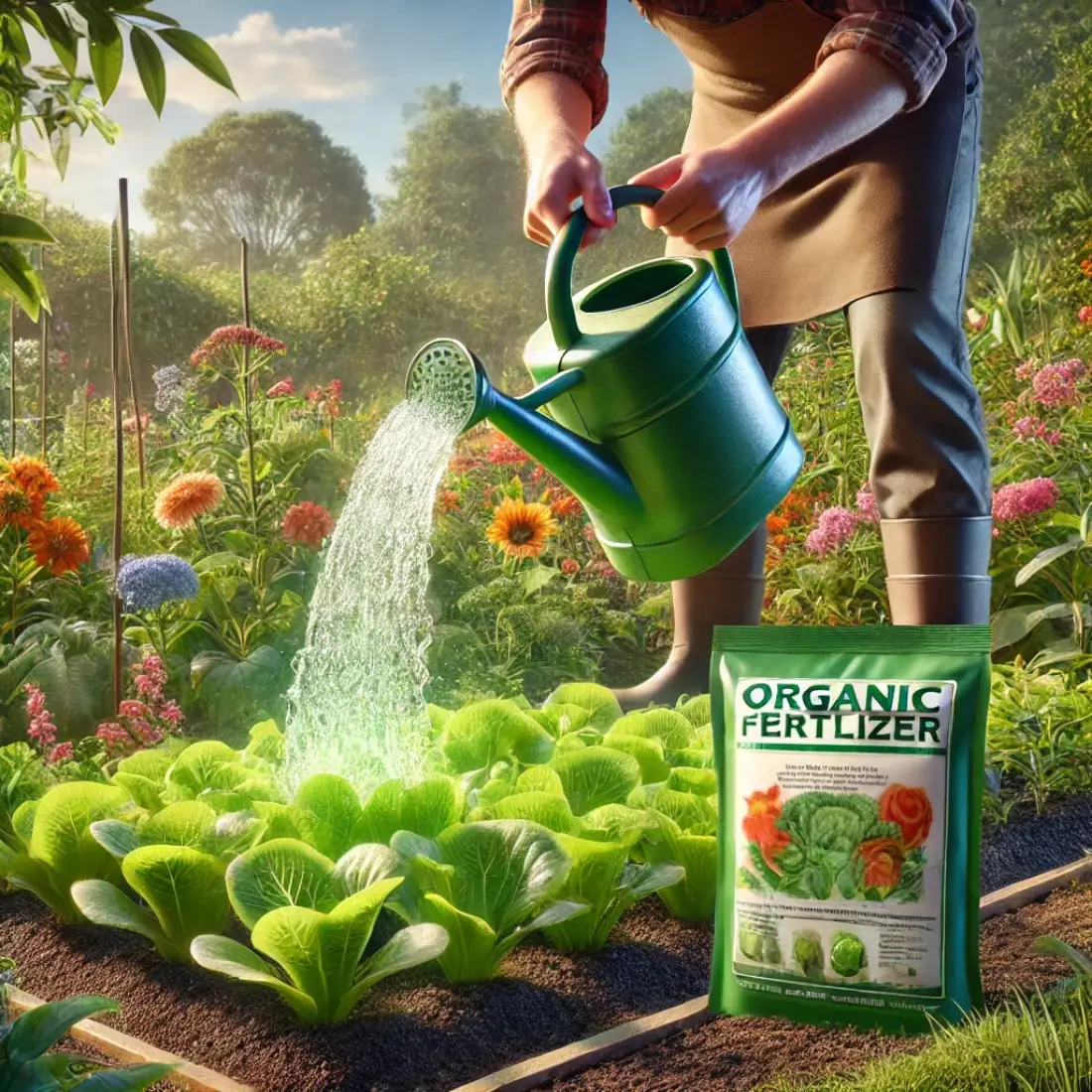Feather meal is an organic fertilizer derived from poultry feathers through hydrolysis and drying processes. It’s gaining popularity among gardeners and farmers due to its high nitrogen content and environmentally friendly nature. Using feather meal in your garden can significantly improve soil health and boost plant growth.
- Feather meal is a high-nitrogen organic fertilizer.
- It is derived from poultry feathers through a process of hydrolysis and drying.
- Benefits include improving soil structure and providing slow-release nutrients.
- Suitable for a wide range of crops and soil types.
Nutrient Composition and Benefits
Feather meal is rich in nitrogen, containing about 12-15%, making it ideal for promoting leaf and stem growth. It also includes small amounts of phosphorus and potassium, supporting root development and overall plant health.
Benefits to Plants
- Slow-Release Nitrogen Source Feather meal decomposes slowly, providing a steady nitrogen supply over time, which reduces the risk of nitrogen burn and ensures consistent plant growth.
- Enhanced Microbial Activity The organic nature of feather meal encourages beneficial soil microorganisms, improving nutrient availability and soil structure.
- Improved Soil Structure and Fertility Adding feather meal to soil increases organic matter, enhancing moisture retention, reducing erosion, and promoting a robust root system.
Feather meal benefits high-nitrogen crops like leafy greens, corn, and tomatoes, and is suitable for various soil types.
How to Apply Feather Meal
Feather meal can be applied directly to the soil or mixed with compost. For direct application, evenly distribute the meal over the soil surface and then work it into the top few inches of soil. When mixing with compost, combine feather meal with compost at a ratio of 1:4 and use it as a top dressing or incorporate it into the soil.
Recommended Dosages
The dosage of feather meal depends on the type of plant and soil condition. For general application, use 3-6 pounds per 100 square feet of garden area. For individual plants, sprinkle 1-2 tablespoons around the base of each plant. Adjust the dosage based on soil test results and specific crop requirements.
Timing and Frequency
Apply feather meal at the beginning of the growing season to provide a nitrogen boost for plants. For perennials and long-season crops, a mid-season application can help sustain growth. Feather meal is slow-releasing, so typically, one or two applications per season are sufficient.
Suitable Crops and Soil Types
Feather meal is particularly beneficial for nitrogen-loving crops such as:
Feather meal is suitable for a wide range of soil types. It is particularly effective in sandy soils that lack organic matter, as it helps improve soil structure and moisture retention. In clay soils, feather meal can enhance aeration and reduce compaction. Adjust the application rate based on soil texture and fertility.
Potential Drawbacks and Solutions
Drawbacks
- Nitrogen Burn: Over-application can lead to nitrogen burn, damaging plants.
- Odor Issues: Feather meal can have an unpleasant odor when first applied.
Solutions
- Proper Application Techniques: Follow recommended dosages and avoid over-application. Incorporate feather meal into the soil to minimize nitrogen burn.
- Odor Management: Mix feather meal with compost or soil to reduce odor. Water the area thoroughly after application to help dissipate the smell.
Combining Feather Meal with Other Organic Fertilizers
Feather meal is excellent for providing high nitrogen content, but combining it with other organic fertilizers ensures a well-rounded nutrient supply. Here are some effective combinations:
Feather Meal and Blood Meal
- Nitrogen Boost: Both feather meal and blood meal are rich in nitrogen. Blood meal provides a quick nitrogen release, while feather meal offers a slow, steady supply.
- Application: Use feather meal for long-term nitrogen needs and supplement with blood meal for a rapid initial boost, especially at the start of the growing season.
Feather Meal and Bone Meal
- Balanced Nutrition: Feather meal supplies nitrogen, while bone meal is rich in phosphorus and calcium, essential for root development and flowering.
- Application: Mix feather meal into the soil at planting time for nitrogen. Add bone meal to the planting holes or as a side dressing to ensure adequate phosphorus for root growth.
Feather Meal and Fish Emulsion
- Comprehensive Nutrient Supply: Fish emulsion provides a balanced mix of nitrogen, phosphorus, and potassium, along with trace minerals.
- Application: Use feather meal for its slow-release nitrogen benefits and apply fish emulsion as a foliar feed or soil drench for immediate nutrient availability.
Feather Meal and Compost
- Improving Soil Structure: Compost adds organic matter, enhancing soil texture, water retention, and microbial activity. Feather meal provides a nitrogen boost.
- Application: Mix feather meal into the compost pile or add both directly to the soil to enrich the nutrient content and improve soil health.
Advantages of Combining Fertilizers
- Balanced Nutrients: Ensures plants receive essential nutrients like nitrogen, phosphorus, potassium, and trace minerals.
- Enhanced Soil Health: Improves soil structure, water retention, and microbial activity.
- Sustainable Growth: Supports long-term plant health and productivity.
Best Practices
- Test Soil: Conduct soil tests to determine nutrient deficiencies and adjust fertilizer combinations accordingly.
- Follow Recommendations: Use recommended application rates to avoid nutrient imbalances and plant damage.
- Monitor Plant Health: Regularly check plant health and adjust fertilizer applications as needed.
Combining feather meal with other organic fertilizers creates a balanced and sustainable approach to plant nutrition, promoting healthy growth and robust yields.
FAQs about Feather Meal
What is feather meal made from?
Feather meal is made from poultry feathers that are processed through hydrolysis and drying, resulting in a nutrient-rich organic fertilizer.
How does feather meal benefit plants?
Feather meal provides a high nitrogen content, which promotes vigorous leaf and stem growth. It also enhances soil structure and microbial activity, leading to healthier plants.
How do I apply feather meal to my garden?
Feather meal can be applied directly to the soil or mixed with compost. For general application, use 3-6 pounds per 100 square feet or 1-2 tablespoons per plant, and work it into the top few inches of soil.
Is feather meal suitable for all soil types?
Yes, feather meal can be used in various soil types. It is particularly effective in sandy soils for improving moisture retention and in clay soils for enhancing aeration.
Can feather meal burn plants?
Feather meal can cause nitrogen burn if over-applied. It is important to follow recommended dosages and application methods to avoid damaging plants.
What crops benefit most from feather meal?
Crops that thrive with high nitrogen levels, such as leafy greens (lettuce, spinach, kale), corn, tomatoes, broccoli, and cabbage, benefit most from feather meal.
How often should I apply feather meal?
Feather meal is slow-releasing, so one or two applications per growing season are typically sufficient. Apply at the start of the growing season and, if needed, a mid-season boost.
Can I combine feather meal with other fertilizers?
Yes, combining feather meal with other organic fertilizers like blood meal, bone meal, fish emulsion, or compost can provide a balanced nutrient supply for plants.
Does feather meal have an odor?
Feather meal can have a mild odor when first applied, but this usually dissipates quickly. Mixing it with soil or compost and watering thoroughly can help manage any initial smell.
Is feather meal environmentally friendly?
Yes, feather meal is an organic fertilizer that reduces waste from the poultry industry and improves soil health, making it an environmentally friendly option for sustainable agriculture.










